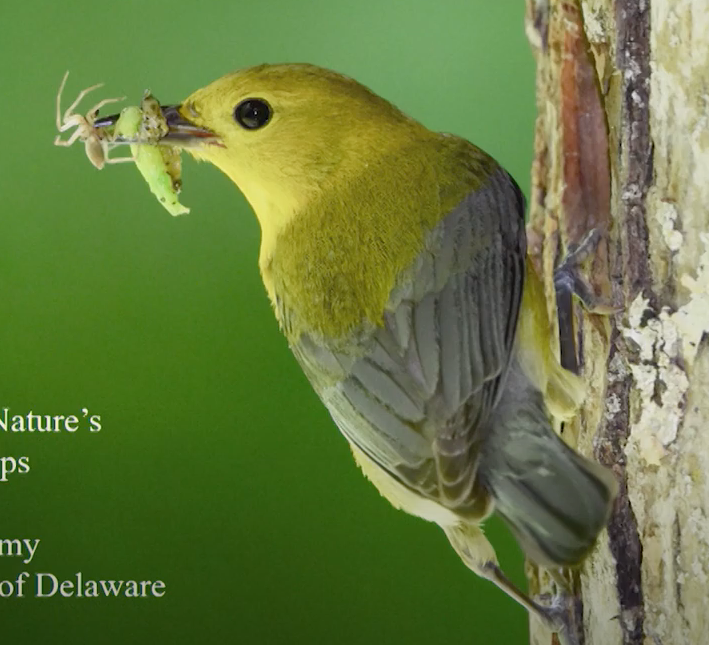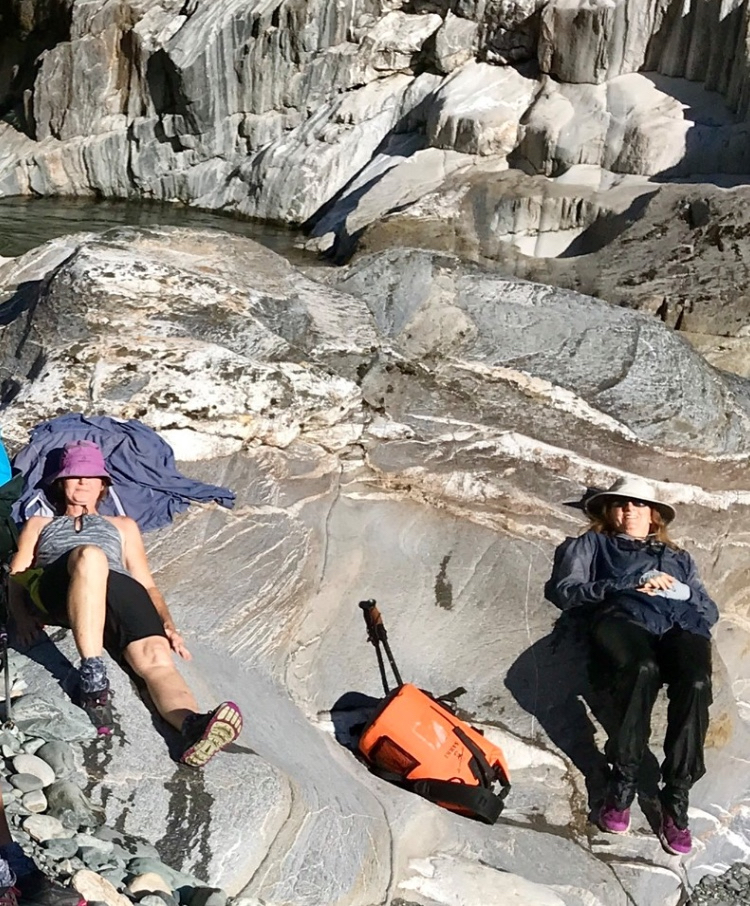|
January 7, 2021 Dear Chair and Members of the Central Region Water Quality Control Board, RE: Amoruso Ranch Project (WDID No. 5A31CR00520) This letter is to inform the Central Region Water Quality Control Board about environmental threats the Amoruso Ranch development project poses to water resources, fisheries, endangered species, public health and safety in Placer County and beyond. Amoruso Ranch: the 649 acre primarily single family sprawl, new “community” on carbon sequestering wetlands and farmland in western Placer County. It is but one, of many massive western Placer Co. development projects pending before this Board. The project alone and cumulatively with other locally approved developments, is irrevocably damages natural resources that are critical to the preservation, enhancement and restoration of California’s water resources and drinking water. The Alliance for Environmental Leadership is a coalition of 16 local environmental and civic organizations. We ask that you fulfil your duty to ensure proper allocation of water resources and efficient use under the Clean Water Act and deny the 401 Permit for the Amoruso Ranch development for the protection of the environment, public health and all beneficial uses. The Amoruso Ranch was recently annexed into the City of Roseville, and As shown below, the environmental analyses of the project is inadequate and incomplete so that the Board will be unable to certify that the project complies with Clean Water Act requirements. The most significant ecological features of the project site and surrounding lands are vernal pools. Placer County once had 117,289 acres of vernal pool habitat and 75% of that has been destroyed. Of the 25% of vernal pools remaining, they occur in western Placer County where sponge-like soils rest atop nearly impenetrable, water repellent clay. The wetland delineation maps for the Amoruso development was created by aggregating multiple-sources and are inconsistent with the single study wetland delineation/vernal pool map for the region prepared by Vollmar and Associates under a commission by US Fish and Wildlife and Bureau of Reclamation. These inconsistencies should be reconciled by the CRWQCB. In addition to having properties that severely limit abilities to support buildings and roads. Soils preparation for development impacts subsurface water flows – adversely impacting ecosystem flood control services and potentially impacting form and function of mitigation sites (PCCP). In times of severe drought conditions, mass extinction and climate uncertainty, water intensive single family sprawl projects such as Amoruso Ranch should not be considered over the benefit of residents and species. The projects’ adverse impacts to streams, vernal pools, ponds and other waters individually and cumulatively with other projects approved in the Pleasant Grove/Orchard Creek and Auburn Ravine watersheds have not been analyzed. The Amoruso project EIR anticipated on-site mitigation. Subsequent to the approval of the Placer County Conservation Plan (PCCP), Amoruso Ranch is now proposing to participate instead, in the in lieu fee program which is a significant change that affects aquatic resources and mitigation plans that are not spelled out in the EIR. The Amoruso Ranch project is intensely auto-dependent and will adversely affect public health in what is the 5th worst air quality region in the nation. It poses downstream flood and pollution risks because the Pleasant Grove Retention Facility upon which it depends is unfunded and has yet to be subject to environmental analysis. The Retention Facility itself will cause many thousands of linear feet of healthy riparian corridor to be eliminated. The meandering nature of Pleasant Grove creek serves to slow stormwater run-off and supports habitat critical to 14 listed endangered species. The cumulative impacts to climate and habitat loss/ecosystem services resulting from conversion of a grassland landscape consisting of soils that function as nature’s sponge and support healthy vernal pools to impervious surfaces, has not been adequately considered in the EIR. For the benefit of present and future generations, ask the Central Region Water Quality Control Board to deny the 401 Permit application. How does the CRWQCB effect and implement the Governor’s Executive Orders for protection of Species Diversity, Farmland, Climate and Open Space? The Amoruso Ranch project violates the goals of these Orders. BACKGROUND AND DETAILS ON KEY ISSUES:
The CVRWQCB has issued a tentative order for waste discharge requirements. We urge the Board to rescind this order. The Amoruso Ranch Project is yet another urban sprawl project on farmland in West Placer. The 649 acre green fields and wetland site was recently annexed to the City of Roseville following preparation of an EIR in 2016. The project is located south of West Sunset Boulevard approximately 1.5 miles west of Fiddyment Road. The proposed project will result in the development of a mix of uses, including 337 acres of low, medium and high density residential land developed with 2,827 dwelling units. The land use plan also includes three commercial parcels totaling 51 acres, a 9.6-acre elementary school site, seven neighborhood parks, and a 3-acre fire station/public facilities site. If built as proposed, the project will have permanent impacts on nearly 14 acres of aquatic resources, including vernal pool, wetland, and streambed habitat. The Central Valley Regional Water Quality Control Board (“Central Valley Water Board”) is considering whether to grant the project proponent’s application for a Section 401 water quality certification for Amoruso Ranch. The Central Valley Water Board issued a tentative Waste Discharge Requirements Order for the project and will hold a public hearing on the matter during the February 18/19, 2021 Central Valley Water Board meeting. The full text of the order can be found on the Central Valley Water Board’s website at Central Valley Water Board’s Tentative Orders web page (https://www.waterboards.ca.gov/centralvalley/board_decisions/tentative_orders/index.html) under the heading of “Discharger-Specific Orders for Future Regional Board Meetings.” The following issues have been identified: The tentative Waste Discharge Requirements Order does not sufficiently address compensatory mitigation. The Board is required to consider a project’s proposed mitigation measures prior to issuing a 401 Certification and accompanying Waste Discharge Requirements Order. The tentative order is vague and incomplete with regard to the project’s mitigation; many mitigation quantities in tables in the tentative order simply say “TBD.” The public cannot meaningfully comment on the tentative order unless there is sufficient information about the mitigation measures and the Board’s analysis thereof. The Board should not finalize the tentative order until the public has had the opportunity to comment on the full scope of the mitigations proposed. The mitigation plan for Amoruso Ranch is undefined and unclear. The 401 Certification application and 404 Permit applications both indicated that Amoruso Ranch would mitigate impacts to vernal pools, wetlands, and other waters of the U.S. on three off-site mitigation sites (Mourier East, Mourier West, and Skover) located west of the Amoruso Ranch project area. The project’s Wetland Mitigation Proposal and its supporting analysis, as well as the Mitigation Monitoring and Reporting Program, are based on these three properties being the location of off-site mitigation. These sites were thoroughly analyzed and selected for off-site mitigation due to their close proximity to the project site and potential to preserve vernal pool connectivity in the area. However, a December 2019 letter from the applicant indicates that the applicant now intends to mitigate impacts to waters of the U.S. through the Western Placer County In-Lieu Fee (WPILF) program. It is not clear that a sufficient analysis has been done to determine whether the new off-site mitigation locations are in the same watershed as the Amoruso project site or if they are suitable for recreation of vernal pools/vernal pool fairy shrimp habitat, or for relocation of dwarf downingia (Downingia pusilla). It is required under the Procedures for Discharges of Dredged or Fill Material to Waters of the State that compensatory mitigation requirements must be commensurate with the amount and type of impact that is associated with a particular Order. There has been no analysis or discussion of whether the new mitigation plan which uses the WPILF is commensurate with Amoruso Ranch’s impacts. The Board should not issue the Waste Discharge Requirements Order until a new Wetland Mitigation Plan related to the WPILF is provided. Impacts of Placer Parkway have not been addressed. Placer Parkway, though designated as “not a part of this project,” is a foreseeable and imminent effect of Amoruso Ranch. The proposed footprint of this parkway covers many acres of vernal pools, seasonal wetlands, and seasonal wetland swales within the Amoruso Ranch project site. The impacts of the Placer Parkway have not yet been analyzed, despite the fact that the parkway is going to have unknown effects to the hydrology contributing to the vernal pool complex on the site. Drainage facilities to handle storm water runoff still need to be constructed. Cumulative development in the Roseville area, which includes the Pleasant Grove Creek watershed, will increase the amount of impervious surfaces which could increase peak stormwater runoff flows and increase flood elevations. Amoruso Ranch plan currently relies on drainage facilities that are not yet constructed or will require additional construction – the Regional Pleasant Grove Retention Basin Facility, Reason Farms Regional Retention Basin, and drainage in the AI Johnson Wildlife area. Better analysis of the impacts of stormwater runoff and drainage should be performed. The Findings of Fact in the tentative order are vague and truncated. A meager 4 pages of findings of facts were provided as Attachment C to the tentative order. The findings lump together all of the supposed impacts and mitigation measures. The Board should provide more thorough findings of fact that detail the specific impacts of the project and the precise mitigation measures that are proposed for each impact, to show that the Board’s findings truly support the issuance of the order. Cumulative Impacts The project being considered by the CVWQCB are but two of many massive urban sprawl developments approved or pending for western Placer County’s grasslands. The impact of wholesale conversion of many tens of thousands of acres of grasslands has not been considered in a cumulative or holistic way. The impacts to climate being a key issue. Additionally, the developments, by virtue of their proposed land use (low density sprawl and associated swimming pools and landscape) in a time of climate uncertainty, will create a demand for treated water that in years to come, may simply be unavailable. In this environment of uncertainty due to CA’s historical droughts and climate change, the cumulative impacts of fthis project and multiple other sprawl projects that have been approved must be evaluated. Will fisheries succumb to enable swimming pools? How does this development and others like it exacerbate climate change and cause the destruction of ecosystem services related to natural water conservation and carbon sequestration that are critical to human survival? In light of the Governor’s Executive Orders and climate science, these questions must be addressed. Endangered Species – 14 listed endangered species and ecosystems occur within the Amoruso site. All are proposed to be relocated into the Placer County Placer Conservation Plan area which is already functioning at ecosystem capacity at each trophic level. This is the same “mitigation” that is proposed for many tens of thousands of acres subject to development in the immediate vicinity of Amoruso and Placer County in general, There is scarce empirical evidence that species and habitat “relocation” is successful. The Swainson’s Hawk which travels 10,000 miles to and from Argentina each year, makes the west Placer grasslands its notheran home. Relocation is not an option here. The spade-foot toad, burrowing owls and fairy shrimp have specific ecological niches and chemical bionutrient needs. that cannot be replicated successfully – even if there space in the trophic level into which they are proposed to be relocated. The threatened Western Pond turtle which lives in Amoruso Ranch will not accept relocation. It will persist in travelling for its lifetime to its home of origin after relocation. We know turtles are among the most threatened of all major invertebrate groups, with 365 species threatened or already extinct due to destruction of habitat. Grassland Habitat – The developments will cause disruption to aporox.650 acres of Cometa-Fiddyment, Fiddyment-Kaseberry and Alamo-Fiddyment soils which are distinguished by the depth of sponge-like topsoil over clay. During the rain-y season, these fluffy soils become saturated to 40-60% water, moderating runoff and retaining water for slow discharge into the dry season. The sponge-like nature of the soils is an important factor to mitigate flood and a control for fisheries’ needs. Grasslands in the US are disappearing at a rate exceeding the losses of Amazon rainforest. Conversion of grasslands for development compromises the ecological services they provide such as filtering trillions of gallons of water that goes on to be used for drinking water and helps support healthy fisheries in the American and Sacramento Rivers, the Bay Delta and Pacific Ocean. Destruction of grasslands threatens iconic species and the natural phenomenon of bird migration. Grassland bird species that reside in the Amoruso Ranch project area have declined as much as 80% as have four species of bumble bee that live there – making these critical species at risk of extinction. What is particularly grievous is that the destruction of these natural resources is not necessary to fulfil a community need, The cost of the housing product for the Amoruso project far exceeds Placer residents’ ability to pay. The proposed commercial/service uses will never be built out because there is insufficient demand.This is a growth inducing sprawl project. AEL is not opposed to growth, per say, but we advocate for smart growth in Placer and Nevada Counties where populations will grow significantly over the next 50 years. To accommodate this growth without forever losing the natural environment that makes these Counties unique and supports all life, we propose a new land-use vision and new values for land-use planning. The Alliance for Environmental Leadership (AEL) is a coalition of local community influencers and organizations determined to re-frame the way our community grows and is governed through citizen advocacy, environmental leadership and by amplifying social justice issues. AEL is a grassroots organization. At the local level where decisions most directly impact community members, our Board of Supervisors is failing us. Over the past several years, amid Placer County’s rapid growth, developers have not produced a single unit of affordable housing. We ask therefore, that you intervene for the public good on the CRWQCG’s issue of water resources alone; and for the environment, by denying this project’s 401 Permit application. The Amoruso Ranch project is inconsistent with the Governor’s Executive Orders for protection of Species Diversity, Farmland, Climate and Open Space. We support the Governor’s Orders and ask that you do as well. Help us create communities that benefit the environment and support the quality of life we all desire for our loved ones and our community. The Alliance for Environmental Leadership brings together like-minded organizations and citizens to defend natural ecosystems, organize for civic engagement and advocate for Smart Growth because it serves all community members and protects the environment that sustains us. We urge you to visit our website at enviroalliance.org. We produced the Citizen-Initiated Smart Growth Plan which includes a comprehensive analysis of natural systems in western Placer and shows the miracle of ecosystem interconnectivity there. You may access this Plan here: Citizen-Initiated Smart Growth Plan Phase 1 URL: bit.ly/CISGP1. Citizen-Initiated Smart Growth Plan Phase 2 URL: : bit.ly/CISGP_2 Thank you for the opportunity to provide comments. We look forward to your responses and to meeting you at the upcoming Public Hearing. Please advise as to when the Amoruso Ranch Project will be heard. Sincerely, Leslie Warren, Chair Alliance for Environmental Leadership
|
|
|
Contact Us
Join Us

We defend and protect natural ecosystems in Placer and Nevada Counties.
MEETINGS MONTHLY, REACH OUT FOR DETAILS
allianceforenviroleadership@gmail.com
Share the Love
When you donate to the AEL, you enable our positive and inclusive consensus-building projects to grow in scope and depth.
To see what we are currently fundraising for, and to learn how to donate, click the button below.
© Copyright 2020 Alliance for Environmental Leadership, Designed by Genevieve Marsh






